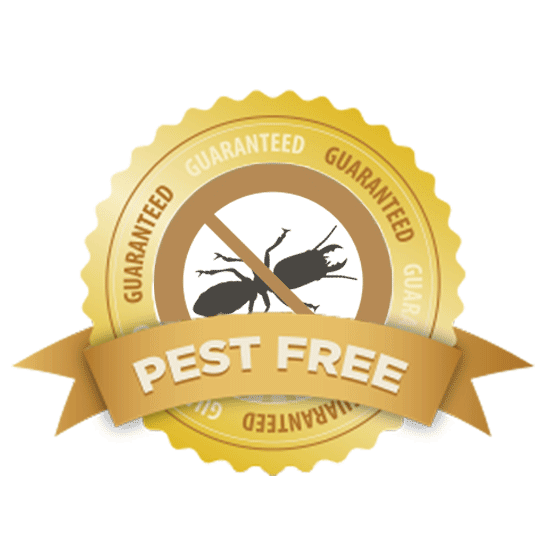Relied On A1 Exterminator Charlotte NC - Comprehensive Pest Solutions
Wiki Article
Bed Insect Therapy Breakdown: Contrasting Chemical Vs. Non-Chemical Solutions
In the realm of parasite control, specifically when taking care of the persistent problem of bed pests, the choice in between chemical and non-chemical therapy solutions can be a crucial one. Both strategies use distinct advantages and disadvantages, affecting elements such as effectiveness, safety and security factors to consider, and total price. By examining the nuanced information of each method, a clearer understanding of which course to seek in attending to a bed bug problem can be obtained.Performance of Chemical Therapies
Chemical treatments for bed bug problems have been commonly recognized for their quick and powerful efficacy in eradicating these insects. When considering the efficiency of chemical treatments, it is crucial to recognize that they can offer a fast and extensive service to a bed pest issue. Expert pest control operators frequently count on insecticides to target bed pests at numerous stages of their life cycle, consisting of fairies, eggs, and adults. These chemicals typically work by interfering with the bed pests' nervous system, leading to paralysis and eventual fatality.Moreover, chemical therapies have the advantage of offering residual impacts, indicating that they can continue to get rid of bed insects even after the initial application. This residual activity is especially advantageous in combating any type of possible re-infestations. Furthermore, the fast activity of chemical treatments can bring relief to people dealing with severe bed pest invasions, allowing them to restore control of their home promptly.
Safety And Security Concerns With Chemical Solutions
One critical facet that needs cautious consideration when utilizing chemical services for bed insect treatment is making sure the security of occupants and the setting. Direct exposure to certain chemicals utilized in bed insect therapies can lead to breathing issues, skin irritability, or various other damaging reactions, especially in people with pre-existing conditions or sensitivities.Additionally, the environmental effect of chemical remedies is another considerable consideration. Some chemicals utilized in bed pest therapies may be hazardous to valuable pests, wild animals, and environments if they seep right into the soil or water supply. It is necessary to utilize chemical therapies carefully, complying with safety and security standards, and considering much less toxic choices to minimize these dangers and ensure the efficient and safe monitoring of bed pest invasions.
Advantages of Non-Chemical Techniques
Taking into consideration the potential safety issues and ecological influence associated with chemical solutions for bed bug treatment, discovering non-chemical strategies offers an appealing alternative with numerous distinct advantages. Non-chemical therapies are eco pleasant, as they do not contribute to air or water pollution, making them a lasting choice for bug control.Additionally, non-chemical services can be efficient in targeting bed pests, consisting of hard-to-reach areas where chemical therapies may not permeate - A1 exterminators charlotte nc. Approaches such as warm therapy, vacuuming, heavy steam cleaning, and cushion encasements give complete elimination without the use of hazardous chemicals.
Limitations of Non-Chemical Treatments

In addition, non-chemical therapies often require several applications to achieve successful obliteration. This can be time-consuming and might not constantly ensure full elimination of all bed pests and their eggs, specifically in hard-to-reach or concealed areas.
In addition, the success of non-chemical treatments heavily depends on proper implementation and thoroughness, which can be testing for individuals without professional experience. Poor application of non-chemical approaches may cause incomplete obliteration, resulting in relentless invasions and the need for extra therapies.
As a result, while non-chemical treatments have their benefits, it is vital to recognize these restrictions and consider them when determining one of the most effective approach for managing bed bug infestations.
Cost Contrast: Chemical Vs. Non-Chemical Options
Given the limitations associated with non-chemical treatments, a necessary element to assess in the context of bed bug management is the price comparison between chemical and non-chemical alternatives. In contrast, non-chemical therapies like heat treatment or vapor can be much more expensive, with costs ranging from $1,000 to $6,000 for an entire home. While the preliminary price of chemical therapies might appear lower, numerous therapies may be required to completely eliminate the problem, possibly boosting the total expense.Verdict

Thinking about the prospective safety issues and environmental impact linked with chemical options for bed pest treatment, exploring non-chemical strategies provides a promising choice with a number of distinct advantages.Provided the constraints connected with non-chemical therapies, a vital element to assess in the context of bed bug management is the expense comparison in between chemical and non-chemical options. In comparison, non-chemical treatments like warm treatment or steam can be a lot more pricey, with prices varying from $1,000 to $6,000 for an entire home. While the initial cost of chemical therapies might appear lower, multiple therapies might be needed to totally get rid of the problem, possibly boosting the general expense.In conclusion, when comparing chemical and non-chemical bed pest treatment options, it is essential to take into consideration efficiency, security, benefits, limitations, and expense.
Report this wiki page